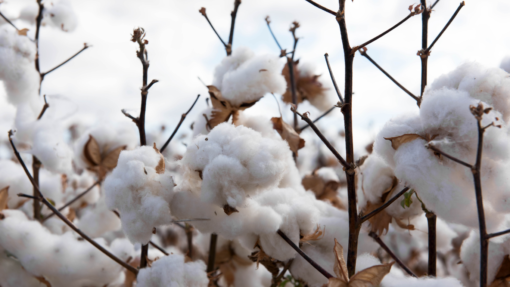It is generally the case that the U.S. cotton market is influenced by aggregate production uncertainty. One reason for this is that a majority of the U.S. acreage is planted in Texas (Figure 1), with much of that under dryland conditions contributing to historical abandonment rates between 4% and 62% statewide. In drought years like the current one, this production risk is only heightened. The management of this risk is potentially helped by publicly available market information data.
The first upcoming major information source is the May 12th USDA “World Agricultural Supply and Demand Estimates” (WASDE) report published by the USDA’s World Agricultural Outlook Board (https://www.usda.gov/oce/commodity/wasde ). The May report is notable for publishing USDA’s first official, comprehensive projections of U.S. and world crop supply and demand variables. Historically, the May WASDE report tends to be closely watched and is frequently associated with cotton market volatility.
Like other crops, U.S. cotton is monitored by weekly crop condition reports and crop progress reports (on Mondays) from USDA’s National Agricultural Statistics Service (NASS, https://www.nass.usda.gov/). Because cotton is a perennial bush in its native habitat, its growth and response to stress are different from annual grain crops. Hence there is less correlation between weekly crop conditions and progress for cotton yield outcomes compared to grains. Nevertheless, the news media and some market analysts pay attention to these weekly observations between the major report milestones.
June 30th “Planted Acreage” is another closely watched major report that is conducted by USDA/NASS. This report is sometimes associated with market volatility when it contradicts expectations based on the March 31st “Prospective Plantings report from USDA. USDA’s Farm Services Agency (FSA) provides supplemental acreage information with periodic certified acres data through the summer (https://www.fsa.usda.gov/news-room/efoia/electronic-reading-room/frequently-requested-information/crop-acreage-data/index ).
For U.S. cotton, the September WASDE report represents the first extensive proven yield sampling for areas outside of South Texas, in addition to grower interviews. This sample-based production estimate is refined in subsequent WASDE reports through December, as well as with data on cotton ginnings. The uncertainty about cotton yield may be further exacerbated in 2022 from restricted input applications. For example, anecdotal evidence of reduced quantities of nitrogen fertilizer applications (due to the higher cost) could contribute to lower-than-average yields. The resulting yield effect from fewer inputs might not be realized until the ginnings data in November. Hence, this season could involve extended price volatility beyond the normal resolution of weather market uncertainty.

Robinson, John. “Milestone Indicators of U.S. Cotton Supply and Demand“. Southern Ag Today 2(20.1). May 9, 2022. Permalink








